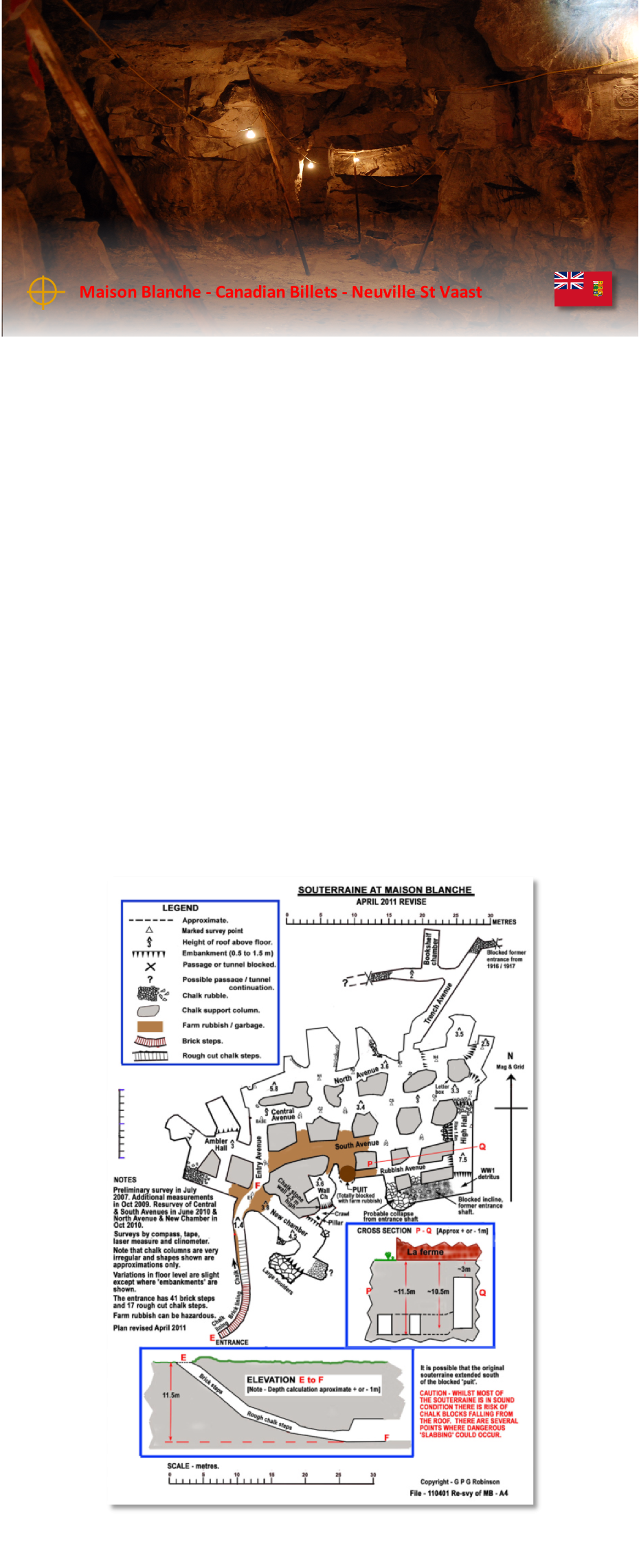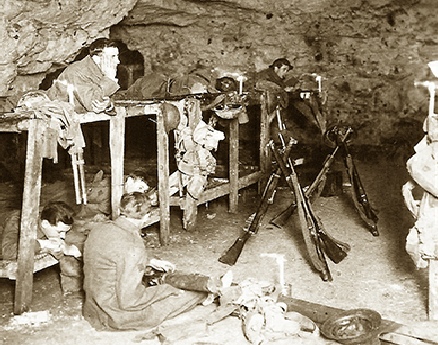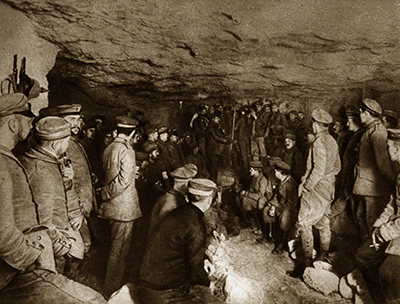
THE DURAND GROUP




Background to Souterraines
Until superseded by brick in the mid 19th century the primary building material in northern France was chalk mostly quarried underground. All towns and most villages had one or more of these underground quarries (carrières). Referred to in British Great War accounts as ‘caves’ and by the Germans as ‘catacombs’, the usual term today is souterraine, or in Picardy sometimes termed Les Muches (the refuges). A German record lists around 800, mostly in the occupied area. Overall there were probably a couple of thousand. Close to the front lines, souterraines in sound condition offered potential as secure accommodation for troops and command centres. The most extensive system developed for this purpose was at Arras where the Tunnelling Companies linked over thirty souterraines to provide accommodation for about 20,000 troops via tunnels connected between central Arras and the forward fighting line.

Maison Blanche Souterraines
Modest in size, and located a kilometre south of Aux Rietz, the origins are uncertain. An inscription, a carving and a drawing on the walls, indicate that it was probably in use around 1861. At that time there was one brick clad entrance stairway and a puit. Despite the intensive 1915 battles over the area (known subsequently as the 'Labyrinth' because of the maze of trenches), there is no evidence that it was known to either the Germans or the French. Apparently discovered in late 1916 it was inspected by 185 Tunnelling Company in January 1917 and then developed for use by the 1st Canadian Division as accommodation for about a Company behind the reserve line.
Two additional entrances were excavated and it was linked into the front line and the Douai subway by a series of communication trenches. The history of the 15th Battalion CEF (48th Highlanders of Canada) refers directly to this souterraine stating:

"Most of the men were on working parties each night, labouring in the front line, supports, and in tunnels being built behind the front-line. These, in later days, saved hundreds of men, who sat deep and laughed as concussions shook the shoring and earth trickled down. They slept in the bad air of the Maison Blanche Caves during the day. There were many strange tales told about those caves. Certainly, they were very old and, perhaps, as the tales went, once sheltered fugitives of the French Revolution and the women and children of Arras during the War of 1870.”


All materiel on this site (except where indicated) is © Durand Group 2018
All materiel on this site (except where indicated) is © Durand Group 2023